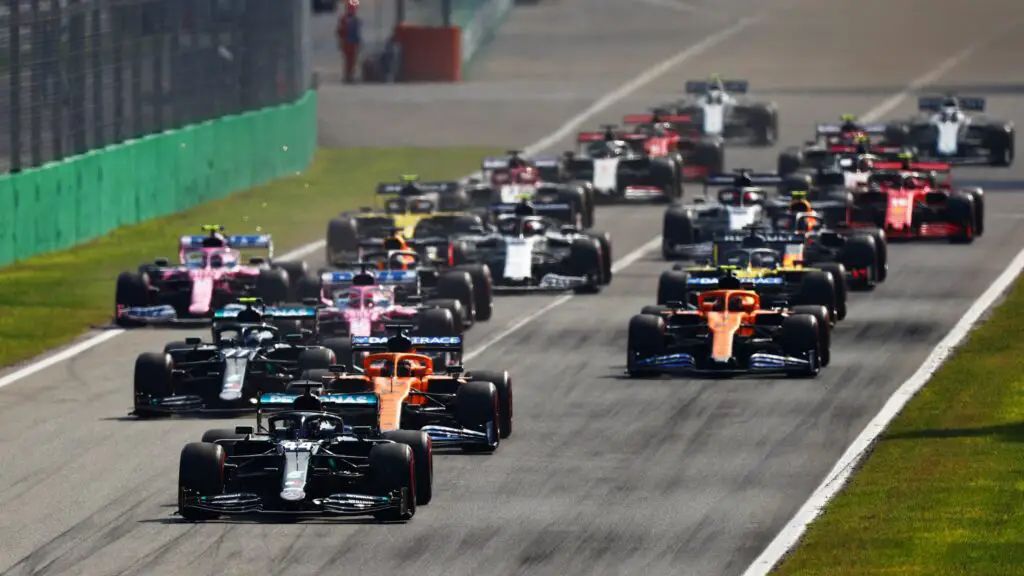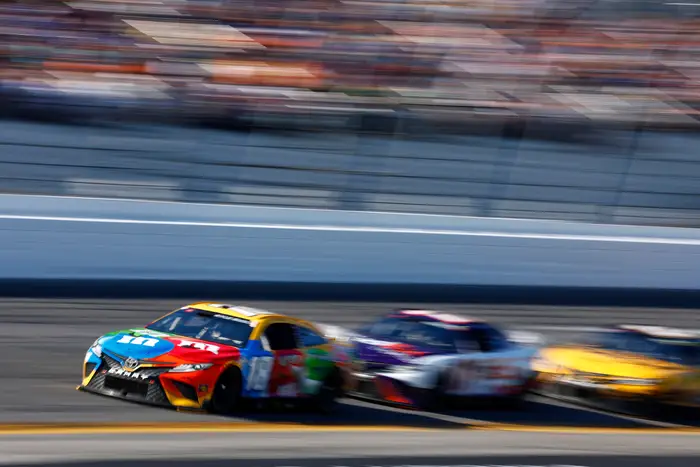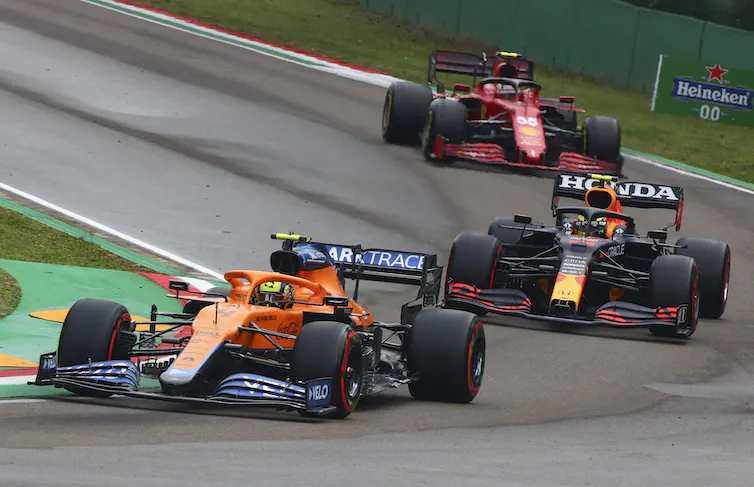Formula One (F1) is the pinnacle of motorsport, featuring the most advanced and powerful racing cars in the world. How fast do these machines really go, and how do they compare to other types of race cars?
Formula One Cars Top Speeds

The top speed of an F1 car depends on several factors, such as the engine power, aerodynamics, drag, fuel load, track layout and weather conditions. However, on average, an F1 car can reach speeds of around 360 km/h (223 mph) on long straights during a race.
Valtteri Bottas recorded the fastest speed ever recorded in an F1 race – 372.5 km/h (231.4 mph) at the 2016 Mexican Grand Prix. This was achieved thanks to the high altitude of Mexico City, which reduces air density and drag.
However, this is not the absolute limit of an F1 car’s potential. Off the race track, F1 cars can reach even higher speeds with modifications and special conditions. The fastest speed ever achieved by an F1 car was 397.36 km/h (246.9 mph) by Honda at the Bonneville Salt Flats in the US in 2006.
This was done with a modified version of their 2005 RA106 car, which had a lower ride height, a longer wheelbase, a larger rear wing, and a special engine.
Formula One Cars Acceleration

Another aspect of an F1 car’s performance is its acceleration, which measures how quickly it can change its speed. An F1 car can accelerate from 0 to 100 km/h (62 mph) in about 2.6 seconds, and from 0 to 300 km/h (186 mph) in about 10.6 seconds.
This is faster than most road cars, which typically take between 3 and 5 seconds to reach 100 km/h, and some hyper cars, which can do it in under 3 seconds3. However, some electric vehicles, such as the Tesla Model S Plaid or the Rimac Nevera, claim to have beaten the 2-second mark for 0-100 km/h acceleration.
F1 Cars Compared To Other Racing Vehicles
Formula One cars are not the only type of race cars that can achieve impressive speeds and acceleration.
Other series, such as IndyCar, NASCAR, MotoGP, and Le Mans, also feature fast and powerful vehicles that compete on different tracks and circuits.
How Fast Does IndyCar Go?

IndyCar is the closest rival to F1 in terms of single-seater racing. IndyCar cars have similar engines and aerodynamics to F1 cars, but they are heavier and less sophisticated.
They also race on oval tracks as well as road courses. IndyCar cars can reach higher top speeds than F1 cars on ovals, up to 380 km/h (236 mph)1, but they are slower on road courses and over a lap.
How Fast Does NASCAR Go?

NASCAR is another popular form of motorsport in the US, featuring stock cars that resemble road cars but have modified engines and chassis.
Cars race mainly on oval tracks, where they can reach speeds of up to 330 km/h (205 mph). However, they are much slower on road courses and have less cornering ability than F1 cars.
How Fast Does MotoGP Go?

MotoGP is the premier class of motorcycle racing, featuring two-wheeled machines that are lighter and more agile than four-wheeled ones.
The bikes can reach speeds of up to 360 km/h (223 mph) on straights, but they are slower than F1 cars on corners and over a lap.
How Fast Does Le Mans Go?

Le Mans is a famous endurance race that takes place once a year at the Circuit de la Sarthe in France. It features various categories of cars that have different specifications and regulations.
The fastest category is LMP1 (Le Mans Prototype 1), which includes hybrid and non-hybrid prototypes that can reach speeds of up to 350 km/h (217 mph) on the Mulsanne Straight. However, they are slower than F1 cars on other parts of the track and over a lap.

